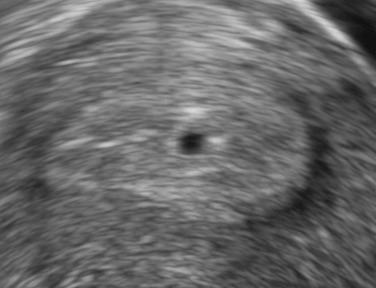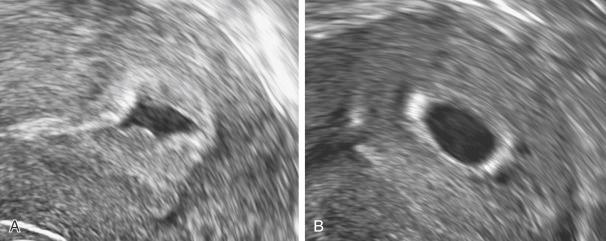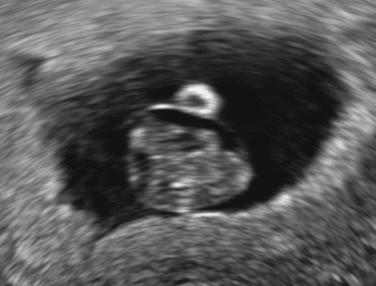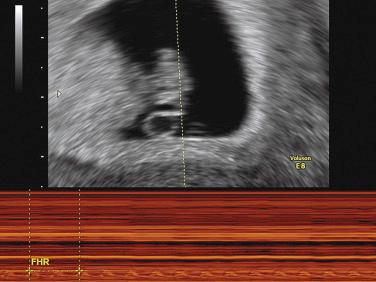Physical Address
304 North Cardinal St.
Dorchester Center, MA 02124
Miscarriage and ectopic pregnancy are the commonest early pregnancy complications.
The diagnosis of early pregnancy failure should be made on transvaginal ultrasound scan given its high diagnostic sensitivity and specificity.
Sporadic chromosomal abnormalities are the overriding cause of miscarriage.
Early pregnancy failure should be managed in a dedicated early pregnancy unit.
Management of early pregnancy failure can be expectant, medical or surgical depending on the clinical situation and patient preference.
Miscarriage is the most frequent complication in pregnancy. It has been reported that 12% to 24% of women who have missed a menstrual period and had a positive pregnancy test result experience the loss of a pregnancy. The rate of miscarriage reduces as the gestational age increases. Three percent of women having a routine first trimester ultrasound between 10 and 13 weeks are diagnosed with a delayed miscarriage, and the incidence of a second trimester miscarriage has been reported as between 1% to 4%. Approximately 25% to 50% of women experience at least one miscarriage during their reproductive years. An estimated 125,000 miscarriages occur every year in the United Kingdom, and these account for more than 50,000 admissions.
The majority of first trimester miscarriages resolve spontaneously without causing any maternal morbidity or requiring treatment. However, because of their high incidence, miscarriages and the associated costs of investigation, hospital admission, treatment and follow-up are a significant burden. Miscarriage has a negative impact on the quality of life of women. It signifies a loss of a baby, even in early gestations, and is a stressful and sad time for the women and their partners.
The maternal mortality rates after miscarriage in the United Kingdom ranged from 0.05 to 0.22 per 100,000 pregnancies between 1985 and 2008. Haemorrhage and sepsis, which mainly occurred after second trimester losses, were the most common causes of death.
Miscarriage is the spontaneous loss of an intrauterine pregnancy that occurs before 24 weeks’ gestation, the current limit of viability. Miscarriages have been described as early and late, with an early miscarriage occurring up to 12 weeks’ gestation and a late miscarriage occurring after 12 weeks’ and before 24 weeks’ gestation.
The majority of first trimester miscarriages are caused by chromosomal abnormalities. Chromosomal abnormalities are detected in up to 85% of pregnancy tissue analysed after a spontaneous miscarriage. Fetal malformations were seen in 85% of early miscarriages in a study that assessed fetal morphology by embryoscopy before surgical management. Roughly 70% of chromosomal abnormalities are accounted for by trisomies, and most trisomies involve chromosome 16, 21 and 22. An estimated 20% are accounted for by triploidies and 10% by monosomy X. The risk for miscarriage increases dramatically with increasing maternal age. The risk for miscarriage is up to 15% in women up to the age of 34 years. However, it increases to 25% at 35 to 39 years, 51% at 40 to 44 years and more than 90% in women aged 45 years and older. The risk for trisomies increases with maternal age, but the rate of nontrisomic and euploid miscarriages does not vary significantly with maternal age.
The risk for miscarriage is higher in women with thyroid dysfunction and thyroid autoimmunity. The presence of thyroperoxidase antibodies was shown in a large meta-analysis to increase the risk for miscarriage significantly (odds ratio (OR), 3.73; 95% confidence interval (CI) 1.8–7.6). A large prospective study showed that the risk for miscarriage nearly doubled in women with a thyroid-stimulating level greater than 2.5 miU/L even in the absence of thyroperoxidase antibodies. The Thyroid AntiBodies and LEvoThyroxine (TABLET) trial is a large multicentre, double-blind, placebo-controlled trial currently being carried out in England and Scotland. The trial is looking at whether the chances of delivery beyond 34 weeks’ are increased in women who have thyroperoxidase antibodies but are euthyroid by taking 50 mcg of Thyroxine daily ( https://www.trials.bham.ac.uk/tablet ). The rate of miscarriage is also higher in women with diabetes mellitus, particularly if disease control is poor before conception.
A systematic review looking at the reproductive outcomes of women with congenital uterine anomalies showed that the presence of a uterine septum increases the risk for a first trimester miscarriage (risk ratio, 2.89; 95% CI, 2.02–4.14).
There is no proven association between miscarriage and smoking, and this was confirmed in a prospective study of 24,608 pregnancies. Obesity is linked with a greater risk for miscarriage. A systematic review with a cohort of 28,538 women showed that the miscarriage rate after spontaneous conception was higher in women with a body mass index (BMI) of 28 kg/m 2 or greater than in women with a BMI less than 25 kg/m 2 (13.6% vs 10.7%; OR,1.31; 95% CI, 1.18–1.46). A national Danish birth cohort study showed that alcohol increases the risk for miscarriage in even small amounts and that the risk increased with increasing alcohol consumption.
Approximately one in five women experience vaginal bleeding and abdominal pain in the first trimester. The bleeding that women experience in early pregnancy can vary from vaginal spotting to severe haemorrhage causing shock. Vaginal bleeding and the loss of pregnancy symptoms can suggest a miscarriage, but miscarriage is not diagnosed clinically. Almost 50% of pregnancies that are complicated by bleeding in the early stages will continue to develop normally beyond the first trimester.
A miscarriage cannot be accurately diagnosed based on clinical symptoms and findings on vaginal digital and speculum examination alone. A transvaginal ultrasound should be performed to make an accurate diagnosis. A large Dutch study showed that a diagnosis of miscarriage made on clinical symptoms and findings was erroneous in more than 50% of cases. Another study showed that 40% of women who were diagnosed as having a complete miscarriage clinically were subsequently shown to have retained products of conception.
A speculum examination is necessary in women presenting with heavy vaginal bleeding or who show signs of haemodynamic instability because it may facilitate immediate removal of products of conception from the cervix. It can, however, be omitted in women who present with lighter bleeding because it does not aid in making an accurate diagnosis.
Transvaginal ultrasonography is the accepted primary investigation for suspected early pregnancy complications. The location and viability of a pregnancy have to be determined when performing an ultrasound scan in early pregnancy. The morphological appearance of pregnancy is the only criteria taken into account for an ultrasound diagnosis of a miscarriage. It is imperative to know the features of a normal intrauterine pregnancy in order to accurately diagnose early pregnancy complications.
A normal intrauterine pregnancy is located within the uterine cavity, which starts at the level of the internal cervical os and extends to the tubal ostia. The trophoblast should not extend beyond the endometrial–myometrial junction. The transvaginal probe is moved in the transverse plane from the internal os all the way to the fundus to identify an intrauterine pregnancy. The location of the gestation sac beneath the endometrial surface is seen in the longitudinal view. The intrauterine location of the gestation scan is finally confirmed by establishing a communication between the cervical canal and uterine cavity. Endometrial thickness does not aid in the diagnosis of a pregnancy’s location or viability. The cervix, caesarean section scar if present, myometrium and interstitial portions of the fallopian tubes are systematically assessed by moving the transvaginal probe from side to side and up and down.
In a pregnancy that is developing normally, a gestation sac is first visualised at 2 weeks and 3 days after conception, that is, at 4 weeks and 3 days in a woman with regular 28-day cycles ( Fig. 5.1 ). The gestation sac typically appears as circular structure with a thick echogenic outer rim and a clear anechoic centre, which signifies the early chorionic activity. The sac is buried into the decidualised endometrium, and its location is just below the midline echo. Myometrial cysts which are associated with adenomyosis may appear similar to an early gestation sac. Myometrial cysts are located beyond the endometrial–myometrial junction, allowing differentiation from a gestation sac. A pseudosac, which is an accumulation of blood within the uterine cavity, may also appear similar to a gestation sac. A pseudosac appears avascular on Doppler examination and is encircled by a single decidual layer. The shape of a pseudosac may also change during the scan. These features differ from that of a normal gestation sac, which has a stable shape, tends to demonstrate strong peripheral blood flow and is surrounded by a double decidual layer ( Fig. 5.2 ).


The mean gestation sac diameter is calculated by taking the average of three perpendicular diameters measured from the inner margin of the echogenic rim. The gestation sac grows roughly 1 mm per day in the early stages of pregnancy. The yolk sac can be visualised within the gestation sac from 5 weeks’ gestation. The technique of measuring the yolk sac is similar to that of the gestation sac but with the measurements taken from the middle of the yolk sac wall. The embryo is first visible at 5 weeks and 5 days’ gestation. The embryo at its early stages typically appears as a linear echogenic structure next to the yolk sac. The vitelline duct connects the embryo to the yolk sac. The crown (head) can be distinguished from the rump (trunk) from 7 weeks’ gestation ( Fig. 5.3 ). The crown-length measurement should be made in the sagittal section of the embryo, ensuring the yolk sac is excluded in the measurement.

Embryonic cardiac activity can be visualised from 5 weeks and 5 days’ gestation, when the embryo measures 2 to 5 mm in length. It is vital not to misinterpret background movement and maternal pulsation as embryonic cardiac activity. The heart rate should be measured using M-mode ( Fig. 5.4 ). Pulsed Doppler examination should not be used in the first trimester because it produces high-energy acoustic output. It has been reported that a heart rate below 100 beats/min is suggestive of a pregnancy that is not developing normally. The heart rate could, however, be below 100 beats/min in an early normal pregnancy and then rise rapidly around 6 to 7 weeks’ gestation. The amniotic sac becomes visible from 7 weeks’ gestation.

The amniotic sac should be measured in a similar manner to the yolk sac, with the measurement taken from the middle of the amniotic sac wall. The spine and rhombencephalon can be distinguished and the umbilical cord can be visualised from 7 weeks’ gestation. The forebrain, midbrain, hindbrain and skull are evident at 8 weeks’ gestation. At the same time, the limb buds start to grow, the amniotic sac expands, the vitelline duct and umbilical cord lengthen and a midgut hernia becomes apparent.
The first evidence of a multiple pregnancy is the presence of more than one gestation sac around 5 weeks’ gestation. There is not always a correlation between the number of embryos in a multiple pregnancy with the number of gestation sacs and yolk sacs. The entire gestation sac needs to be systematically examined when the pregnancy progresses beyond 6 weeks’ gestation to ensure that all embryos present are detected. The amnion is seen separate to the embryo at 7 weeks’ gestation, and this is when amnionicity should be assessed. The chorion and amnion are not fused at this stage, and the chorionicity and amnionicity can be accurately established.
Become a Clinical Tree membership for Full access and enjoy Unlimited articles
If you are a member. Log in here